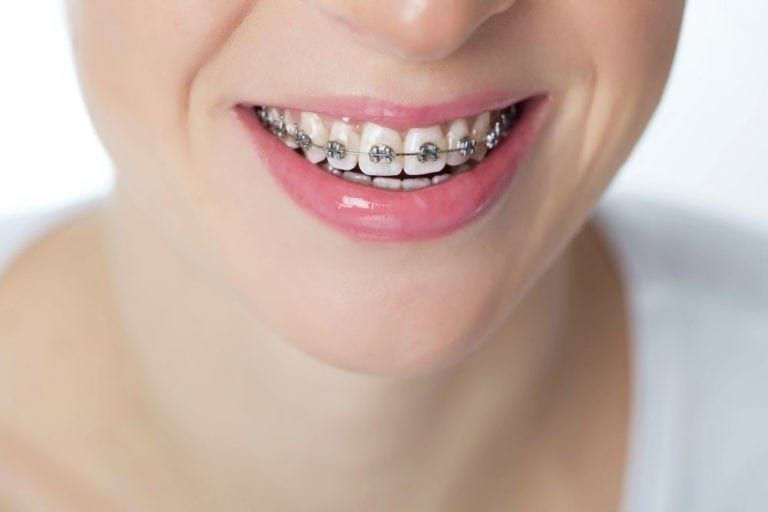How Orthodontists Straighten Smiles Without Surgery
- dclinicdubai
- May 29
- 4 min read
Orthodontists in Dubai are skilled professionals who specialize in aligning teeth and correcting bite issues without the need for invasive surgery. Using innovative, non-surgical methods, they help patients achieve beautifully straight smiles while preserving natural tooth structure and avoiding surgical risks. Whether dealing with mild crowding or complex malocclusion, modern orthodontic techniques offer effective, less invasive solutions that improve oral function and aesthetics. This article explores how orthodontists straighten smiles without surgery and what makes their approach both safe and efficient.

Non-Surgical Orthodontic Techniques:
Orthodontists rely on a variety of non-surgical appliances and treatments to gently guide teeth into proper alignment.
Traditional metal braces using brackets and wires to apply controlled pressure
Ceramic braces that blend with teeth for discreet correction
Clear aligners such as Invisalign, which are removable and nearly invisible
Palatal expanders to widen the upper jaw when necessary
Functional appliances designed to improve jaw positioning without surgery
These devices work gradually to shift teeth and jaws while minimizing discomfort and downtime.
How Braces Work to Straighten Teeth:
Braces remain one of the most common and reliable non-surgical methods for straightening teeth.
Brackets are bonded to each tooth and connected by archwires
Wires exert gentle, continuous pressure to move teeth into desired positions
Periodic adjustments tighten wires and maintain steady progress
Elastic bands or springs may be added to correct bite issues
Treatment duration typically ranges from 18 months to 3 years depending on complexity
Braces are effective for a wide range of orthodontic problems without surgical intervention.
The Role of Clear Aligners:
Clear aligners have become a popular non-surgical alternative for patients seeking a more aesthetic option.
Custom-made transparent trays fit snugly over teeth and apply pressure to move them
Aligners are removable, allowing easier eating, brushing, and flossing
Treatment involves a series of trays worn sequentially to achieve gradual adjustment
Ideal for mild to moderate crowding, spacing, and bite correction
Typically requires fewer office visits and offers greater convenience
Orthodontists in Dubai often recommend clear aligners for adults and teens who want discreet treatment.
Expanding the Jaw Without Surgery:
In cases of narrow upper jaws, orthodontists can use expanders to create space non-surgically.
Palatal expanders apply outward pressure on the upper jaw bones
Encourages bone growth and widens the arch over time
Useful for correcting crossbites and preventing crowding
Usually worn for several months to stabilize the expansion
Provides room for teeth to align naturally without extraction or surgery
This approach is especially common in growing children and adolescents.
Functional Appliances for Jaw Alignment:
When jaw discrepancies contribute to bite issues, functional appliances help reposition jaws without surgery.
Devices such as Herbst or Twin Block appliances influence jaw growth in younger patients
Encourage forward or backward repositioning of the lower jaw
Improve bite relationship and facial profile gradually
Can reduce or eliminate the need for corrective jaw surgery later on
Often used in combination with braces for comprehensive treatment
Functional appliances represent a proactive, non-invasive way to guide jaw development.
Benefits of Non-Surgical Orthodontic Treatment:
Choosing non-surgical methods offers many advantages to patients seeking smile correction.
Minimizes risk and recovery time associated with surgery
Reduces discomfort and potential complications like infection or nerve damage
Often more affordable than surgical procedures
Allows preservation of natural tooth and bone structure
Provides gradual, controlled movement leading to stable, long-term results
Orthodontists in Dubai ensure patients receive care tailored to avoid surgery whenever possible.
When Surgery Might Still Be Needed:
Although many cases are manageable without surgery, some severe orthodontic problems require surgical intervention.
Significant jaw misalignment or skeletal discrepancies that cannot be corrected by appliances
Severe overcrowding requiring extractions and jaw realignment
Facial asymmetries affecting function or aesthetics
Complex trauma cases or congenital defects needing reconstructive surgery
In such cases, orthodontists collaborate with oral surgeons for combined treatment plans
Understanding the limits of non-surgical approaches helps patients make informed decisions.
The Patient’s Role in Successful Non-Surgical Treatment:
Successful orthodontic outcomes depend on patient cooperation and following professional guidance.
Consistently wearing braces or aligners as prescribed
Maintaining excellent oral hygiene to prevent decay and gum disease
Attending regular check-ups and adjustments
Avoiding habits that can hinder treatment, like chewing hard objects or skipping appointments
Communicating concerns or discomfort promptly to the orthodontist
Active participation enhances the effectiveness of non-surgical orthodontics.
Advanced Technology Enhancing Non-Surgical Care:
Orthodontists in Dubai use cutting-edge technology to improve accuracy and comfort in treatment.
Digital scans replace traditional molds for precise appliance fitting
3D imaging aids in detailed diagnosis and treatment simulation
Customized brackets and wires designed with computer assistance
Clear aligner therapy planned through advanced software for predictable results
Teleorthodontics for remote monitoring and guidance
Technology helps tailor non-surgical treatments to each patient’s unique needs.
Final Thoughts:
Orthodontists in Dubai have mastered the art of straightening smiles without resorting to surgery by leveraging modern techniques and technology. Through braces, clear aligners, expanders, and functional appliances, they offer safe, effective, and patient-friendly solutions for a wide range of orthodontic issues. While surgery may be necessary in select cases, the majority of patients benefit from non-invasive methods that restore function, aesthetics, and confidence with minimal disruption. If you’re considering orthodontic care, consulting an experienced orthodontist can help determine the best non-surgical approach to achieving your perfect smile.


Comments